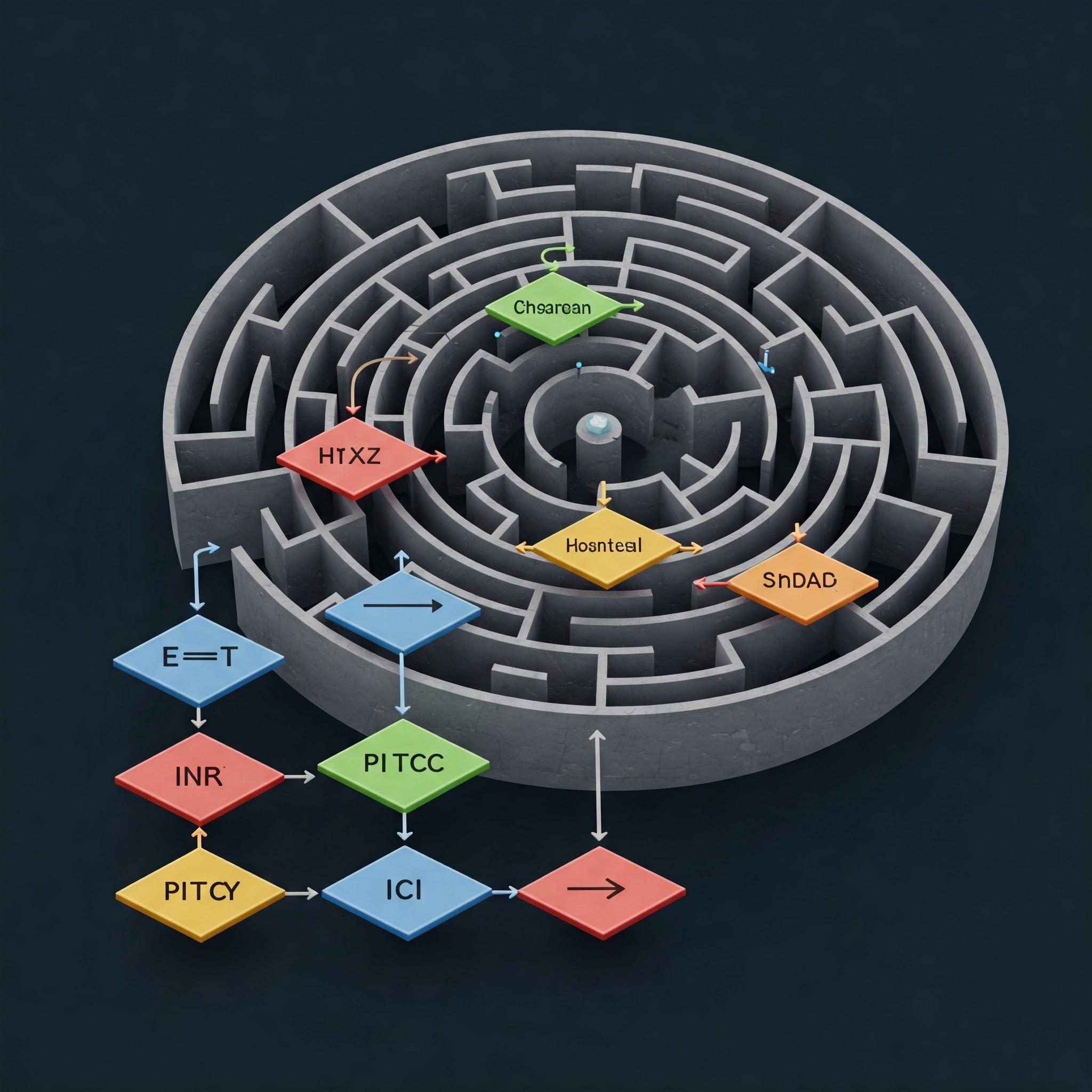Level Up Your Event: Process Mapping in the Digital Age (Optimizing Innovative Events Series - 3)
-
Home
-
Event Consulting
-
Level Up Your Event: Process Mapping in the Digital Age (Optimizing Innovative Events Series - 3)

Level Up Your Event: Process Mapping in the Digital Age (Optimizing Innovative Events Series - 3)
We've all been there. The "innovative event" – a buzzword-laden promise of groundbreaking ideas, networking nirvana, and a jolt to our professional lives. But often, the reality falls short. Behind the flashy keynote and the trendy venue, chaos reigns. Missed deadlines, communication breakdowns, and a general feeling of "winging it" can sabotage even the most promising event.

In our ongoing series, "Optimizing the Management of Innovative Events for Professionals," we've explored the crucial role of strategic planning and meticulous execution. Today, we delve into a powerful tool that can transform your event from a chaotic mess into a well-oiled machine: Process Mapping.
What is Process Mapping, and Why Does it Matter?
Think of process mapping as creating a visual roadmap of your event's journey. It's about breaking down the complex event planning process into smaller, manageable steps, identifying dependencies, and visualizing the flow of tasks. This isn't just about pretty diagrams; it's about:
- Clarity and Communication: A well-defined process map ensures everyone on the team understands their roles and responsibilities.
- Identifying Bottlenecks: By visualizing the process, you can pinpoint areas where delays or inefficiencies are likely to occur.
- Improving Efficiency: Streamlining workflows and eliminating redundancies can save time and resources.
- Enhancing Collaboration: Process maps facilitate better communication and collaboration between team members and stakeholders.
- Risk Mitigation: By identifying potential problems early on, you can develop contingency plans and minimize risks.
- Continuous Improvement: After the event, the process map serves as a valuable tool for post-event analysis and future improvements.
How to Create a Powerful Process Map for Your Innovative Event:
- Define the Scope: Clearly define the start and end points of the process you want to map. For example, "Registration Process" or "Speaker Management."
- Identify the Key Activities: Break down the process into smaller, manageable steps. Use verbs to describe each activity (e.g., "Send Invitation," "Confirm Speaker Availability").
- Determine the Sequence: Arrange the activities in the correct order, showing the flow of the process.
- Assign Roles and Responsibilities: Identify who is responsible for each activity.
- Identify Inputs and Outputs: Determine what resources are needed for each activity (inputs) and what the result of each activity is (outputs).
- Use Standardized Symbols: Employ standardized flowchart symbols to represent different types of activities, decisions, and data.
- Visualize the Process: Use software tools or even a whiteboard to create a visual representation of the process.
- Analyze and Improve: Once the map is complete, analyze it for bottlenecks, redundancies, and areas for improvement.
Tools and Techniques:
- Flowcharts: A classic tool for visualizing processes.
- Swimlane Diagrams: Useful for showing the roles and responsibilities of different team members.
- Value Stream Mapping: Focuses on identifying and eliminating waste in the process.
- Software Tools: Tools like Lucidchart, Miro, and Visio can help you create professional-looking process maps.
Applying Process Mapping to Innovative Events:
Imagine you're organizing an event focused on AI and robotics. You could use process mapping to:
- Streamline the speaker selection and onboarding process.
- Optimize the registration and ticketing process.
- Manage the logistics of showcasing cutting-edge technology.
- Map the flow of information during networking events.
- Plan the content creation and marketing campaign.
By visualizing these processes, you can identify potential roadblocks and ensure a smooth, efficient, and ultimately successful event.
Beyond the Event:
The benefits of process mapping extend beyond the event itself. The insights gained can be used to improve future events, standardize best practices, and build a culture of continuous improvement within your organization.
In the ever-evolving landscape of professional events, innovation is key. But innovation without structure is simply chaos. Process mapping provides the framework you need to transform your innovative event from a promising idea into a resounding success. So, grab your markers, fire up your software, and start mapping your way to event excellence.
Share this post:
Related Posts

We've talked tech, we've dissected data, and we've explored the myriad ways to optimize innovative e...

In the dynamic world of professional events, innovation isn't a one-time spark; it's a continuous fl...


